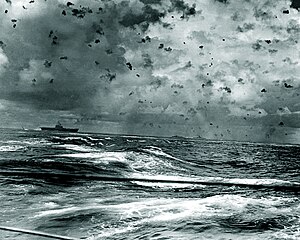
The Battle of the Coral Sea, from 4 to 8 May 1942, was a major naval battle between the Imperial Japanese Navy (IJN) and naval and air forces of the United States and Australia. Taking place in the Pacific Theatre of World War II, the battle is historically significant as the first action in which aircraft carriers engaged each other and the first in which the opposing ships neither sighted nor fired directly upon one another.

Zuikaku was the second and last Shōkaku-class aircraft carrier built for the Imperial Japanese Navy (IJN) shortly before the beginning of the Pacific War. Her aircraft took part in the attack on Pearl Harbor that formally brought the United States into the war, and she fought in several of the most important naval battles of the war, before being sunk during the Battle of Leyte Gulf.

Task Force 11 is a designation that has been used by the United States armed forces for two separate units.

William Frederick Halsey Jr. was a fleet admiral in the United States Navy during World War II. He is one of four individuals to have attained the rank of fleet admiral of the United States Navy, the others being Ernest King, William Leahy, and Chester W. Nimitz.
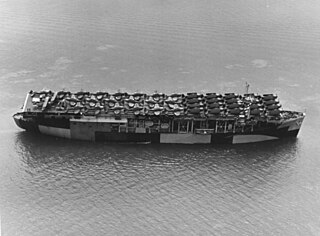
USS Long Island (CVE-1) was lead ship of her class and the first escort carrier of the United States Navy. She was also the second ship to be named after Long Island, New York.
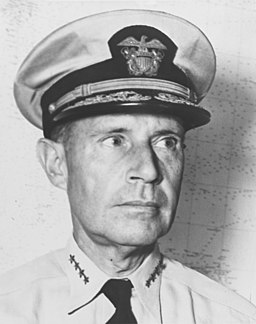
Raymond Ames Spruance was a United States Navy admiral during World War II. He commanded U.S. naval forces during one of the most significant naval battles that took place in the Pacific Theatre: the Battle of the Philippine Sea. He also commanded Task Force 16 at the Battle of Midway, comprising the carriers Enterprise and Hornet. At Midway, dive bombers from the Enterprise crippled two carriers of the Imperial Japanese Navy, Kaga and the flagship Akagi. Most historians consider Midway the turning point of the Pacific War.

The naval Battle of the Eastern Solomons took place on 24–25 August 1942, and was the third carrier battle of the Pacific campaign of World War II and the second major engagement fought between the United States Navy and the Imperial Japanese Navy during the Guadalcanal campaign. As at the Battle of the Coral Sea and the Battle of Midway, the ships of the two adversaries were never within sight of each other. Instead, all attacks were carried out by carrier-based or land-based aircraft.

The Battle of Rennell Island took place on 29–30 January 1943. It was the last major naval engagement between the United States Navy and the Imperial Japanese Navy during the Guadalcanal Campaign of World War II. It occurred in the South Pacific between Rennell Island and Guadalcanal in the southern Solomon Islands.

USS Portland (CL/CA–33) was the lead ship of the Portland class of cruiser and the first ship of the United States Navy named after the city of Portland, Maine. Launched in 1932, she completed a number of training and goodwill cruises in the interwar period before seeing extensive service during World War II, beginning with the Battle of the Coral Sea in 1942, where she escorted the aircraft carrier Yorktown and picked up survivors from the sunken carrier Lexington. She screened for Yorktown again in the Battle of Midway, picking up her survivors as well. She then supported the carrier Enterprise during the initial phase of the Guadalcanal Campaign later that year, and was torpedoed during the Naval Battle of Guadalcanal. The torpedo inflicted heavy damage which put her out of action for six months as she was repaired in Sydney, Australia, and later San Diego, California.
This is a list of aviation-related events from 1942:
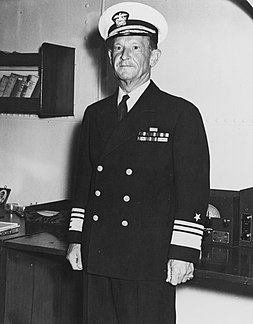
Frank Jack Fletcher was an admiral in the United States Navy during World War II. Fletcher was the operational commander at the pivotal Battles of Coral Sea and of Midway. As a lieutenant, Fletcher was awarded the Medal of Honor for his actions in the battle at Veracruz. He was the nephew of Admiral Frank Friday Fletcher, who was also awarded the Medal of Honor for actions at Veracruz.

Vice Admiral Robert Lee Ghormley was an admiral in the United States Navy who served as Commander, South Pacific Area during World War II.

Thomas Cassin Kinkaid was an admiral in the United States Navy, known for his service during World War II. He built a reputation as a "fighting admiral" in the aircraft carrier battles of 1942 and commanded the Allied forces in the Aleutian Islands Campaign. He was Commander Allied Naval Forces and the Seventh Fleet under General of the Army Douglas MacArthur in the Southwest Pacific Area, where he conducted numerous amphibious operations, and commanded an Allied fleet during the Battle of Leyte Gulf, the largest naval battle of World War II and the last naval battle between battleships in history.

The South Pacific Area (SOPAC) was a multinational U.S.-led military command active during World War II. It was a part of the U.S. Pacific Ocean Areas under Admiral Chester Nimitz.
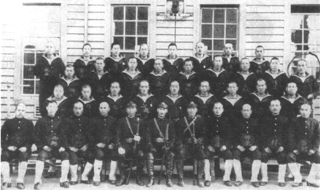
The invasion of Tulagi, on 3–4 May 1942, was part of Operation Mo, the Empire of Japan's strategy in the South Pacific and South West Pacific Area in 1942. The plan called for Imperial Japanese Navy troops to capture Tulagi and nearby islands in the British Solomon Islands Protectorate. The occupation of Tulagi by the Japanese was intended to cover the flank of and provide reconnaissance support for Japanese forces that were advancing on Port Moresby in New Guinea, provide greater defensive depth for the major Japanese base at Rabaul, and serve as a base for Japanese forces to threaten and interdict the supply and communication routes between the United States and Australia and New Zealand.

Kakuji Kakuta, was an admiral in the Imperial Japanese Navy during World War II. He is noted for his role in commanding Japanese naval aviation units in the Pacific War.
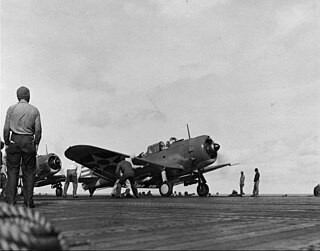
The Marshalls–Gilberts raids were tactical airstrikes and naval artillery attacks by United States Navy aircraft carrier and other warship forces against Imperial Japanese Navy (IJN) garrisons in the Marshall and Gilbert Islands on 1 February 1942.

The 25th Air Flotilla was a combat aviation unit of the Imperial Japanese Navy Air Service (IJNAS) during the Pacific Campaign of World War II.
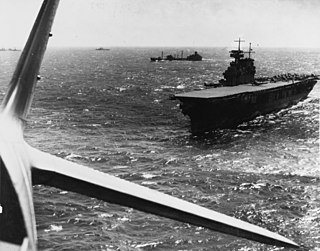
Task Force 17 (TF17) was an aircraft carrier task force of the United States Navy during the Pacific Campaign of World War II. TF17 participated in several major carrier battles in the first year of the war.
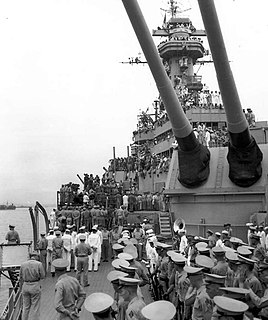
The United States Navy grew rapidly during World War II from 1941–45, and played a central role in the war against Japan. It also assisted the British Royal Navy in the naval war against Germany and Italy. The U.S. Navy grew slowly in the years prior to World War II, due in part to international limitations on naval construction in the 1920s. Battleship production restarted in 1937, commencing with the USS North Carolina (BB-55). The navy was able to add to its fleets during the early years of the war while the US was still neutral, increasing production of vessels both large and small, deploying a navy of nearly 350 major combatant ships by December 1941 and having an equal number under construction.
